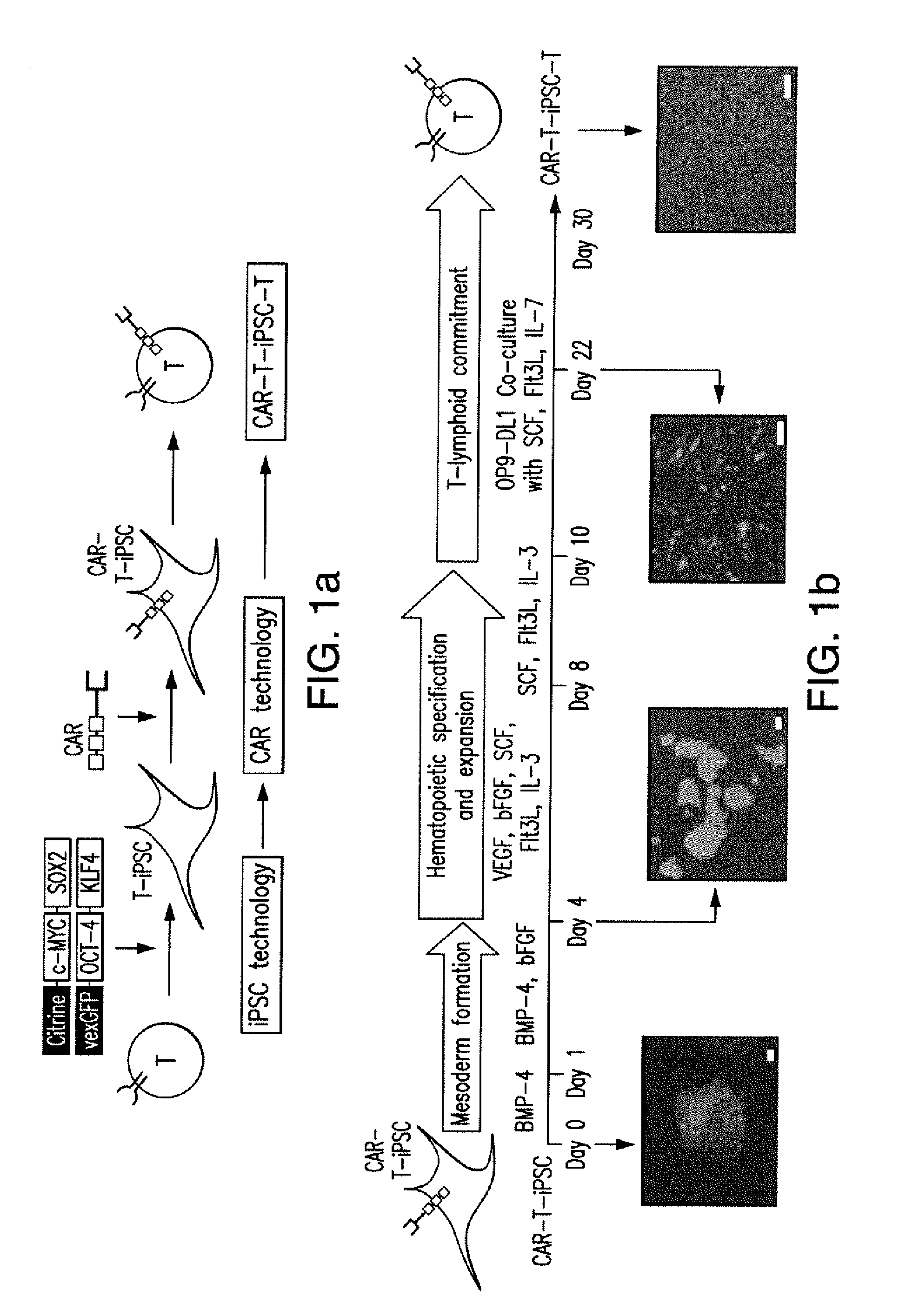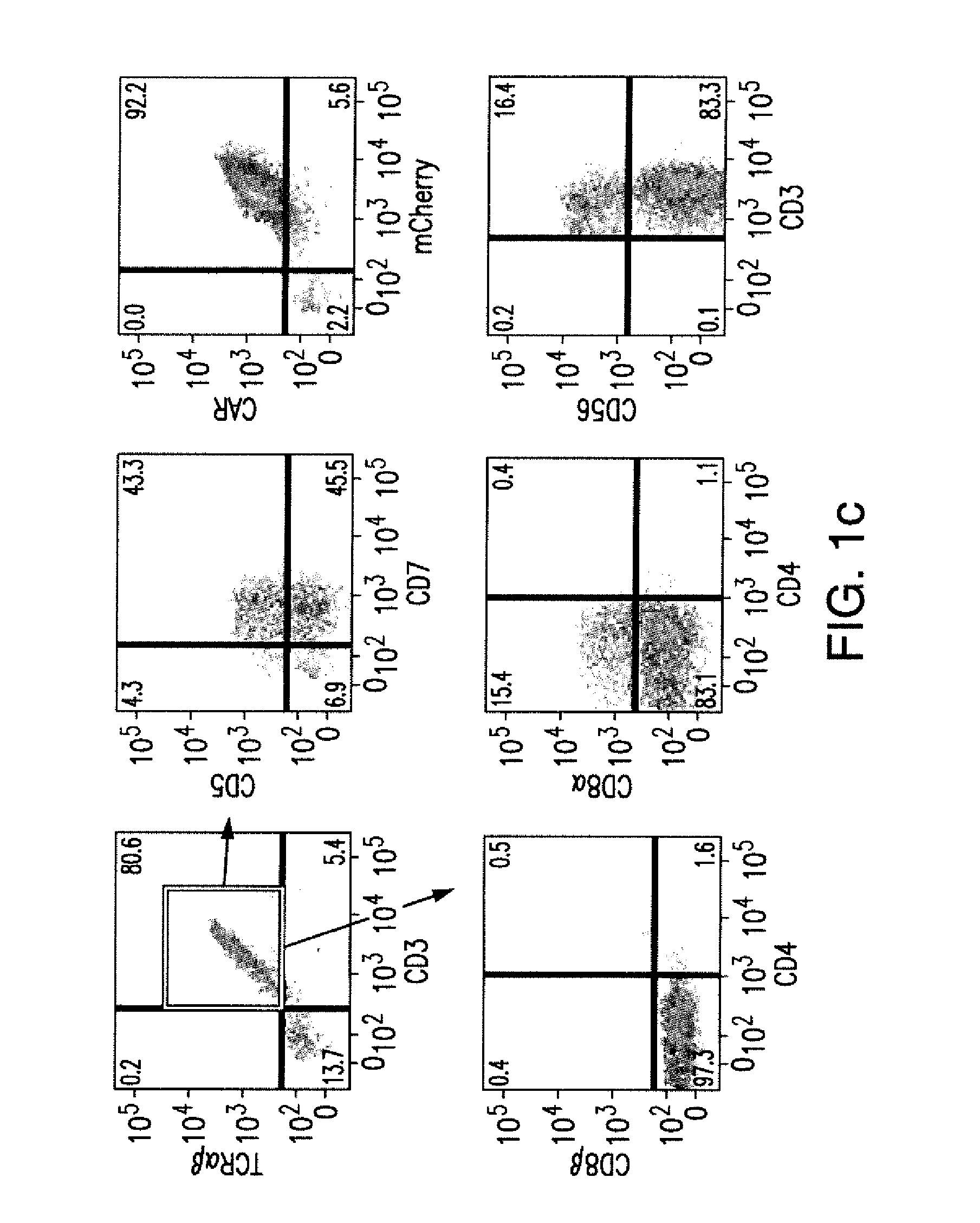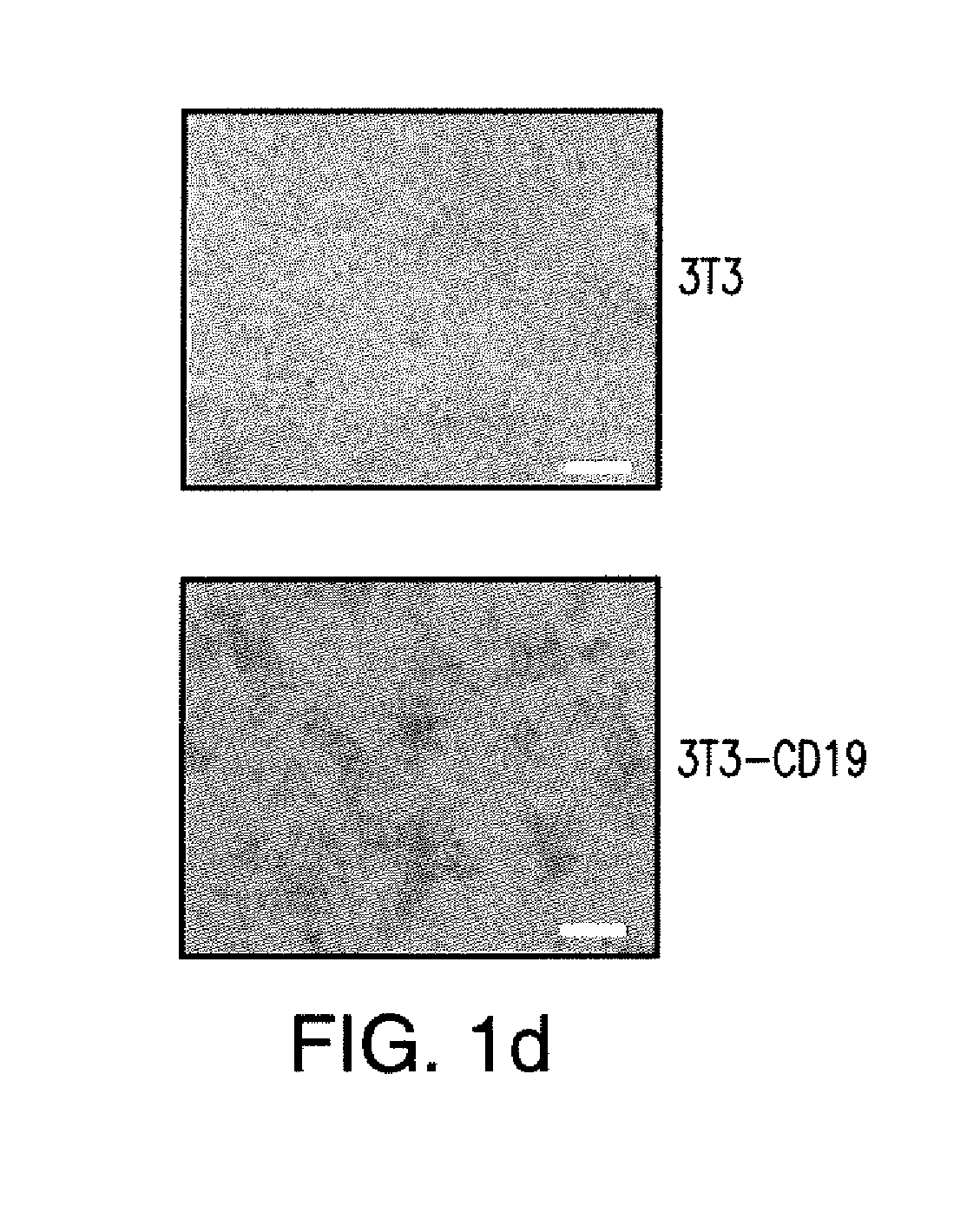Effective generation of tumor-targeted t cells derived from pluripotent stem cells
a technology of stem cells and tumors, applied in the field of adoptive immunotherapy, can solve the problems of short life span, difficult to isolate and expand the typically low number of t cells reactive to a desired antigen, and limited current adoptive immunotherapy, and achieves enhanced survival and functional potential, cytotoxic potential and anti-tumor activity.
- Summary
- Abstract
- Description
- Claims
- Application Information
AI Technical Summary
Benefits of technology
Problems solved by technology
Method used
Image
Examples
example 1
Generation of Tumor-Targeted Human T Lymphocytes from Induced Pluripotent Stem Cells for Cancer Therapy
1. Summary
[0263]This Example provides exemplary cell culture methods for use in producing exemplary cells of the present invention. These cell culture systems result in differentiation when using ES or iPS cells as starting populations. When peripheral blood T cells are used as a starting population this cell culture system additionally dedifferentiates T cells to iPS like cells that are then differentiated into T like cells for use with CARs of the present inventions.
[0264]Progress in adoptive T-cell therapy for cancer and infectious diseases (1, 2) is hampered by the lack of readily available, antigen-specific, human T lymphocytes. Pluripotent stem cells could provide an unlimited source of T lymphocytes, but the therapeutic potential of human pluripotent stem cell-derived lymphoid cells generated to date remains uncertain (3-6). As shown in this Example, induced pluripotent ste...
example 2
[0301]This example provides exemplary compositions and methods for engineering and providing chimeric T cell receptors (CARs).
[0302]Chimeric antigen receptors (CARs) are provided that combine, in a single chimeric species, the intracellular domain of CD3 .zeta.-chain, a signaling region from a costimulatory protein, such as CD28, and a binding element that specifically interacts with a selected target antigen. The engineered construct may further comprise nucleic acid sequences encoding a fluorescent marker. Such as mCherry, eGFP, etc.
[0303]For this example, a chimeric T cell receptor was provided comprising nucleic acid sequences for encoding a nucleic acid sequence encoding a protein for B-cell lineage cell surface receptor CD19 antigen recognition, a CD28 costimulatory molecule, and mCherry. Such sequences for CD19 and CD28 are provided in U.S. Pat. No. 7,446,190, which is herein incorporated by reference in its entirety including sequences, viral vectors and methods of using vir...
example 3
[0307]This example describes prophetic compositions and methods for providing a “universal” CAR+ cell which is “edited” so that it would not induce graft vs. host symptoms in an allogeneic system or host.
[0308]Thus, in one embodiment, compositions and methods are provided to knocking out HLA (class I) cell surface expression in a cell before or after expression of a CAR. In further embodiments, compositions and methods are provided to knocking out HLA (class II) cell surface expression in a cell before or after expression of a CAR. in one embodiment, a TCR is silenced or knocked in. In one embodiment, a costimulatory ligand is silenced or knocked out. in one embodiment, a suicide gene is knocked-in. in one embodiment, a sequence for an inducible cytokine is transduced into a CAR+ cells. in one embodiment, a sequence for an imaging gene is transduced into a CAR+ cells. In some embodiments, a heterologous gene is placed inside of genomic safe harbor site of a cell's genome, In some em...
PUM
| Property | Measurement | Unit |
|---|---|---|
| concentration | aaaaa | aaaaa |
| concentration | aaaaa | aaaaa |
| temperature | aaaaa | aaaaa |
Abstract
Description
Claims
Application Information
 Login to View More
Login to View More - R&D
- Intellectual Property
- Life Sciences
- Materials
- Tech Scout
- Unparalleled Data Quality
- Higher Quality Content
- 60% Fewer Hallucinations
Browse by: Latest US Patents, China's latest patents, Technical Efficacy Thesaurus, Application Domain, Technology Topic, Popular Technical Reports.
© 2025 PatSnap. All rights reserved.Legal|Privacy policy|Modern Slavery Act Transparency Statement|Sitemap|About US| Contact US: help@patsnap.com



